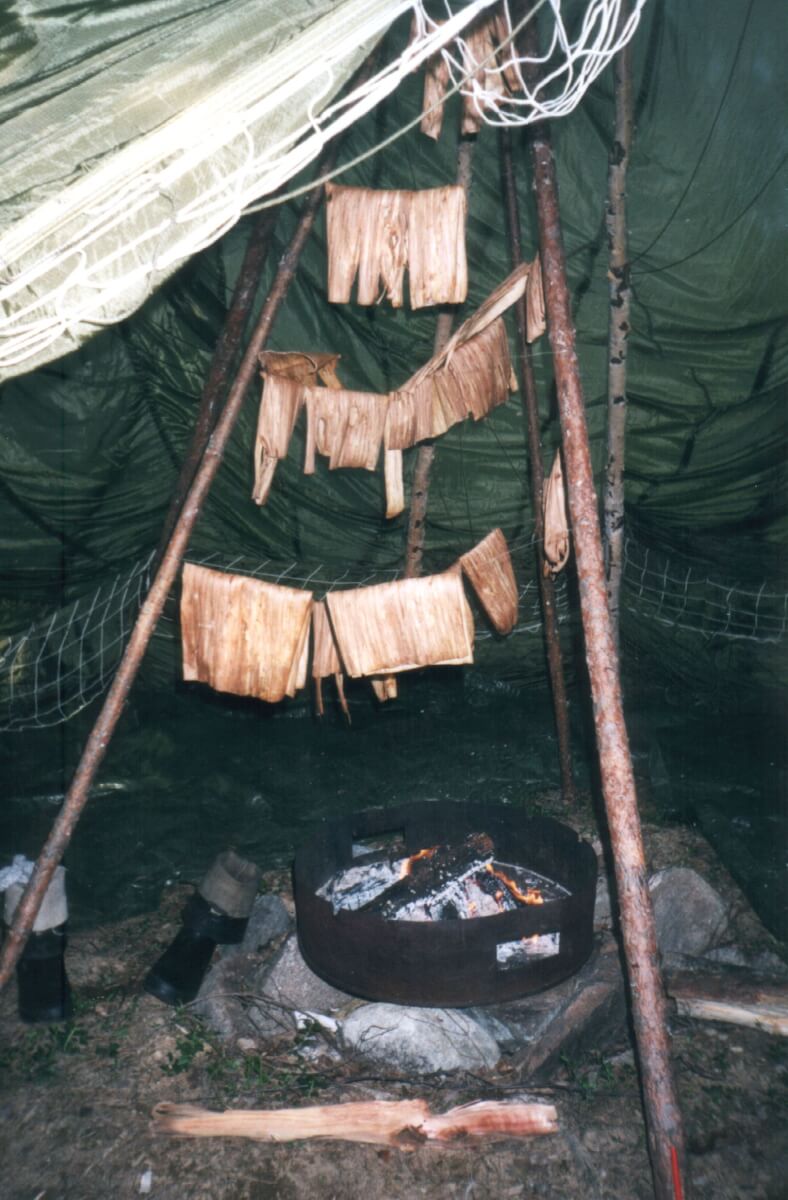Like shoe leather and hardtack biscuits, tree bark is one of those things that would be last on your list of things to eat, if it even makes your list at all. But when preparing for the worst that could happen, you should be ready to take extreme measures to prolong your survival.
But who does this?
Tree bark may not seem like a good food item, but before better crops and grains were available, people from different parts of the world included them in their diet as emergency food or as a supplement.
In Europe, Bark Bread has been a traditional Scandinavian food since medieval times, and Laplanders were well-known to use bark as an ingredient for their food, eating it fresh or roasted throughout the year. Before the introduction of staple grains and crops like the potato, bark from pine trees was used in Northern Europe as an ingredient for bread when food was scarce, such as during the Napoleonic Wars. Another documented use of bark for bread in Europe was during the Finnish Civil War of 1918, when unemployment and food shortages became rampant in Finland and the people had to use substitutes for food.
In North America, Native American tribes were also known to consume the bark of trees for food and as a supplement. In fact, the name “Adirondack” means “tree eaters”, a name used by the Iroquois for their Algonquian neighbors. The Dakelh or Carrier people of Canada were also documented to use tree bark as a staple food.
In modern times, most countries have improved farming and food productions methods, yielding better harvests and added varieties of food for consumption, and making the practice of eating bark obsolete and even unthinkable.

What’s in it for you?
Tree bark can contain the following:
- Carbohydrates
- Dietary fiber
- Minerals such as iron and calcium
- Vitamins
Flour made from pine bark can contain 400kcal per pound. It can also be a source of vitamin C, which is true for the case of scots pine, and help prevent scurvy. Tree bark also keeps blood-sugar levels stable for long periods, making it a viable food for people engaging in extended physical activity—a probable reason why the Carrier people consumed pine bark during long travels.
Trees you can (and can’t) get edible bark from
For most of this article, we use pine (scots pine, to be specific) as an example. Some members of the pine family have edible bark, but you can also use these trees as well:
- Basswood
- Maple (Its sap is also edible and a great source of energy)
- Slippery Elm
But be warned that there are also trees that you SHOULD NOT eat. These include:
- Buckeyes
- Cedar
- Hickories
- Horse Chestnut
- Moosewood
- Yews
Be very careful when consuming plants in the wild. Do careful research about the plants in your area and those that you might encounter and identify the ones that you can safely consume. Also, while some parts of a particular plant may be okay to eat, it doesn’t mean that everything from it is just as safe. Again, we can’t stress enough how important it is for you to learn this—at best, eating an unsafe plant leads to discomforts such as nausea, headaches and diarrhea. At worst, it could be fatal!

Harvesting and cooking bark
Up to this point, you might be thinking of the rough outer layer whenever you read “tree bark”, but it’s actually the inner layer that you’ll want for your meal.
Here’s how you can actually harvest that edible part of the tree:
- Look for a fresh and healthy-looking tree.
- Make a “window” by cutting a square about 6 x 6 inches through the bark in to the inner, woody layer.
- Pry the outer layer with a knife or a stick.
- Peel strips of the inner layer from the tree with a knife.
The second layer and third layers (phloem and cambium) are what you’re after and are the edible parts of the bark. While you can eat it raw, it can be tough and can be likened to eating dried squid. But there ways to make it easier to eat and more palatable:
- Boiling
Probably just a step above consuming bark raw, boiling can soften the bark a bit. Peel the bark into thin strips and boil them in water. Once cooled, you can eat the strips and drink the water as tea. - Roasting
Simply wrap the strips around a stick and roast them over an open fire. A very simple and easy method, and the warm and dry bark tastes better than consuming it raw. - Frying
This method requires more materials and preparation, but is probably the best way to cook bark. Grease a pan with cooking oil or animal fat and fry strips of the bark as you would fry bacon. Wait until they’re brown and crispy, add some salt, and you have chips made from tree bark.
Baking
Dry the strips of bark under the sun for a day or two or over a fire. After it’s dried enough, you can grind it into smaller bits with a blender (or rocks, if you’re out in the wild). You can use the powdered bark as a substitute for flour and make it into bread, cookies, or porridge.

There are other ways to look for food and, depending on the season, they’ll be easier to source and will provide you with the energy and nutrition that you need. While eating tree bark is a last-ditch effort at sustaining yourself, as long as you know how, even bark can be good enough to eat during a worst-case scenario.


